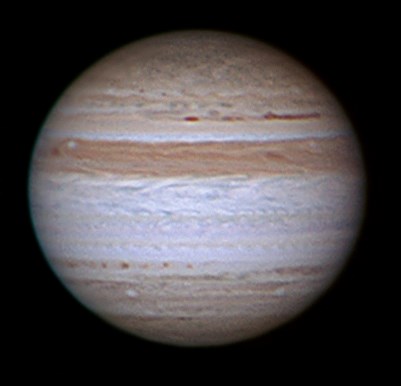The solar system's largest planet is making quite a spectacle of itself in the night sky and will remain visible until about March, according to a celestial expert.ìJupiter's been up, visible for quite some time, a couple months now. It's quite bright and you're probably seeing it south, southwest at about 9, 10 p.m.,î said Jennifer Howse, manager of the interpretive centre at the Rothney Astrophysical Observatory near Calgary.Like other planets, Jupiter makes its orbit around the sun and is visible to Earth at certain points in that orbit. Unlike some other celestial objects that are only visible to certain regions on Earth, when Jupiter is visible, people everywhere can see it.ìIt just depends, obviously, on Earth's orbit around the sun and Jupiter's orbit around the sun, when and how long we see it, just like any other planet,î she said, adding that Mars will be visible in March.Howse said the gaseous giant will be visible on the same elliptical orbit as the sun was on during any given day.ìYou're not going to see them close in the horizon or in the north or something like that. You've got to think about where you saw the sun rise and set during the day, and the path that it follows, and that's where you're going to (see) it in the sky,î she said.Planets such as Jupiter look like a flat disk of light, rather than a star. Jupiter can be seen with the naked eye, but with binoculars it can be seen quite clearly, along with up to four of its moons.When it can be seen, Jupiter is the third brightest object in the sky, after the moon and Venus. Jupiter takes 11.86 years to orbit the sun. In 2011 it reached its closest proximity to the sun during that orbit, drawing closest to the Earth ñ 369 million miles away ñ on Oct. 27. It won't come as close to Earth again until 2022.



